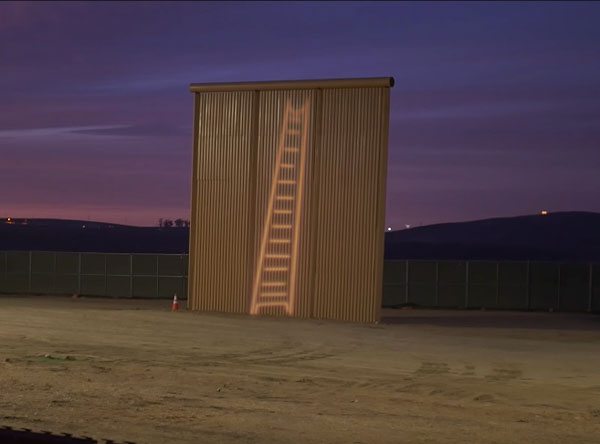
January 10, 2018; Arizona Republic
A newly formed nonprofit arts group named MAGA is calling on Congress or the president to declare the eight prototypes of Donald Trump’s border wall as a national monument under the Antiquities Act of 1906.
“The eight border wall prototypes have significant cultural value and are historical land art,” the group wrote on a website where it is collecting petition signatures.
The group’s lead organizer, Christoph Büchel, believes the prototypes, which are located on land now controlled by the border control, should be memorialized to remind us of a political moment when such stuff was politically viable. (The president, of course, is no big fan of the Antiquities Act.)
Büchel wants no credit for the installation, to which he has volunteered to lead tours.
“I am an artist, but not the artist of this,” Mr. Büchel said. Instead, he said, MAGA endorses the concept that Americans, by electing Mr. Trump, allowed his obsessions to be given form that qualifies as an artistic statement. The fact that the prototypes were designed and built by six private contractors matters less, he said, than the impression that, upon completion, they constitute an unintended sculpture garden willed into existence by the president and his supporters. “This is a collective sculpture; people elected this artist,” Mr. Büchel said.
Sign up for our free newsletters
Subscribe to NPQ's newsletters to have our top stories delivered directly to your inbox.
By signing up, you agree to our privacy policy and terms of use, and to receive messages from NPQ and our partners.
Writing for the Art and Design section of the New York Times, Michael Walker comments:
The notion that the prototypes could qualify as conceptual art might seem somewhat far-fetched. They were designed to United States Customs and Border Protection specifications, built to withstand a 30-minute assault from sledgehammers to acetylene torches, and to be difficult to scale or tunnel beneath. Aesthetic considerations are largely secondary to brute strength, but, when viewed up close, the walls collectively have the undeniable majesty of minimalist sculpture.
Tom Eccles, the executive director of the center of curatorial studies at Bard College, disagrees with the approach:
“History, and thus our landscape, is replete with terrible and terrifying structures,” Mr. Eccles said in an email [to Walker]. “Sculpture and art should speak to our better selves. Naming the Berlin Wall a Land Art project—or conceptual art—doesn’t make it such. These abhorrent things on the border are not art and never will be.”
Büchel’s not the first artist to recognize a canvas in the structures, which are largely inaccessible from the US side but which can be viewed on the Mexican side from atop dirt mounds. Activists in Tijuana have been projecting images onto them already, including one of a stick figure captioned with “¡Llégale!”—Spanish for “Come on in.”—Ruth McCambridge












